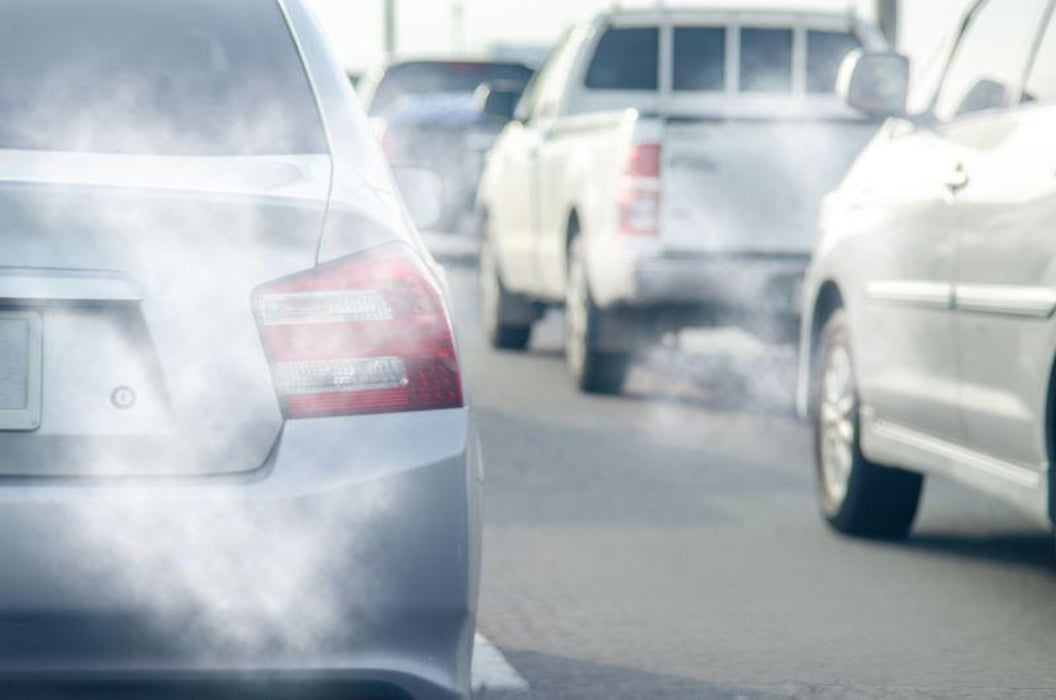There’s Almost Nowhere in the World Free of Air Pollution

TUESDAY, March 7, 2023 (HealthDay News) -- A new study is enough to take your breath way: Nearly no place on Earth is free of air pollution, it found.
The study "provides a deep understanding of the current state of outdoor air pollution and its impacts on human health. With this information, policymakers, public health officials and researchers can better assess the short-term and long-term health effects of air pollution and develop air pollution mitigation strategies,” said study co-author Yuming Guo, from the Monash University School of Public Health and Preventive Medicine in Melbourne, Australia. He spoke in a university news release.
The researchers found that only 0.001% of the global population is exposed to World Health Organization-established safe levels of ambient fine particulate matter known as PM2.5.
Only 0.18% of the global land area had safe levels of pollution, the study found.
Fine particle pollution (PM2.5) is the main cause of smog in parts of the United States. It can be inhaled deep in the lungs, raising the risk of lung and heart disease.
Daily pollution levels have fallen in Europe and North America over two decades, but they increased in southern Asia, Australia, New Zealand, Latin America and the Caribbean, with more than 70% of days globally exceeding safe levels.
Among the other results, the study found that in southern Asia and eastern Asia, more than 90% of days had daily PM2.5 concentrations higher than 15 micrograms per cubic meter of air (μg/m3), which is considered the safe limit by WHO. (Guo said the threshold is still arguable.)
The annual global average of PM2.5 from 2000 to 2019 was 32.8 µg/m3.
The highest PM2.5 concentrations were distributed in the regions of Eastern Asia (50.0 µg/m3) and southern Asia (37.2 µg/m3), followed by northern Africa (30.1 µg/m3), researchers said.
The lowest annual PM2.5 concentrations were seen in Australia and New Zealand (8.5 μg/m3), other regions in Oceania (12.6 μg/m3) and southern America (15.6 μg/m3). However, Australia and New Zealand had a marked increase in the number of days with high PM2.5 concentrations in 2019.
Unsafe PM2.5 concentrations also show different seasonal patterns, Guo said. High concentrations of PM2.5 were found in North America in the summer months and in Northeast China and North India in the winter months.
“We also recorded relatively high PM2.5 air pollution in August and September in South America and from June to September in sub-Saharan Africa,” Guo said.
The findings were published in The Lancet Planetary Health.
More information
The U.S. Environmental Protection Agency has more on PM 2.5.
SOURCE: Monash University, news release, March 6, 2023
Related Posts
2010 to 2017 Saw Increase in Uterine Cancer Mortality Rates
FRIDAY, May 6, 2022 (HealthDay News) -- Uterine cancer mortality increased from...
U.S. Extends COVID-19 Public Health Emergency Another Three Months
MONDAY, July 18, 2022 (HealthDay News) -- As the latest omicron subvariant fuels...
Dos tercios de los sistemas de agua de EE. UU. contienen uranio
VIERNES, 8 de abril de 2022 (HealthDay News) -- Dos tercios de los sistemas de...
